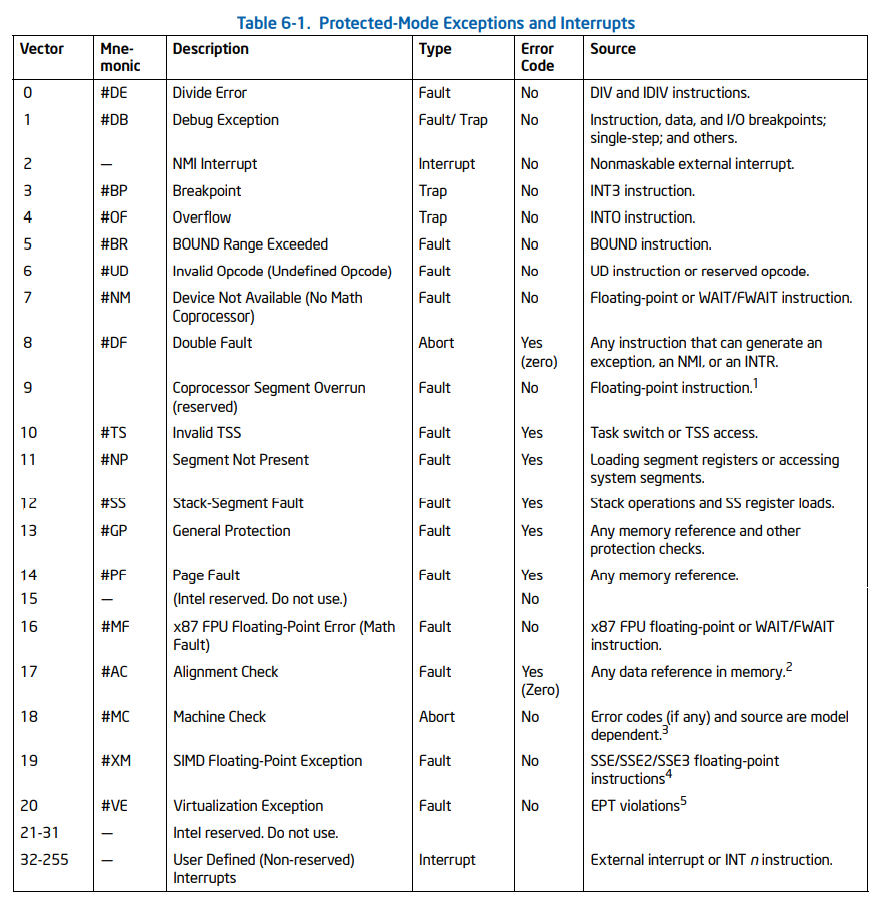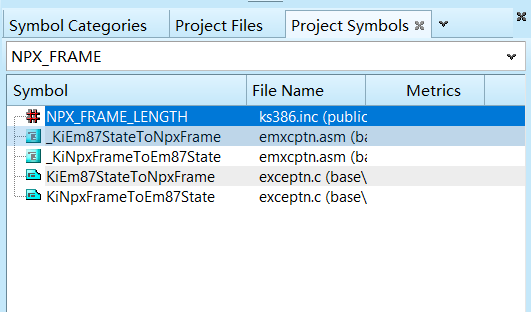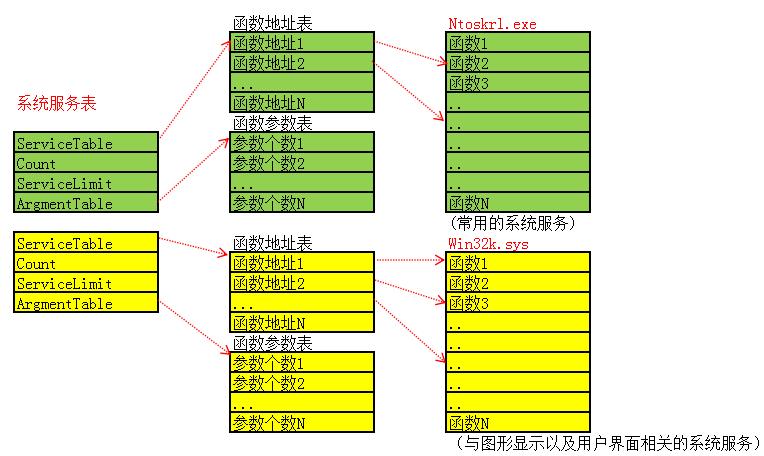系统调用篇——0环层面调用过程(下)
写在前面
此系列是本人一个字一个字码出来的,包括示例和实验截图。由于系统内核的复杂性,故可能有错误或者不全面的地方,如有错误,欢迎批评指正,本教程将会长期更新。 如有好的建议,欢迎反馈。码字不易,如果本篇文章有帮助你的,如有闲钱,可以打赏支持我的创作。如想转载,请把我的转载信息附在文章后面,并声明我的个人信息和本人博客地址即可,但必须事先通知我。
你如果是从中间插过来看的,请仔细阅读 羽夏看Win系统内核——简述 ,方便学习本教程。
看此教程之前,问一个问题,你明确学系统调用的目的了吗? 没有的话就不要继续了,请重新学习 羽夏看Win系统内核——系统调用篇 里面的内容。
🔒 华丽的分割线 🔒
分析 KiSystemService
这个函数所有的分析如下,如果自己单独分析完毕后可以查看下面的折叠:
🔒 点击查看分析 🔒
_KiSystemService proc near ; CODE XREF: ZwAcceptConnectPort(x,x,x,x,x,x)+C↑p
; ZwAccessCheck(x,x,x,x,x,x,x,x)+C↑p ...
arg_0 = dword ptr 4
push 0 ; errorcode
push ebp
push ebx
push esi
push edi
push fs
mov ebx, 30h ; '0' ; 以上代码填充 Trap_Frame 结构体数据
mov fs, bx ; 加载0环的fs,指向KPCR,基址:0FFDFF000h
assume fs:nothing
push dword ptr ds:0FFDFF000h ; 压入 ExceptionList,是KPCR的第一个成员的TIB的第一个成员
mov dword ptr ds:0FFDFF000h, 0FFFFFFFFh ; 将 ExceptionList 置为 -1(EXCEPTION_CHAIN_END)
mov esi, ds:0FFDFF124h ; KPCR + 0x124:CurrentThread
push dword ptr [esi+140h] ; ETHREAD + 0x140:PreviousMode
sub esp, 48h ; 提栈,目前指向 DbgEbp 的位置
mov ebx, [esp+68h+arg_0] ; ebx = SegCs
and ebx, 1 ; 判断调用者是不是 0环 权限
mov [esi+140h], bl ; 将计算结果赋给 PreciousMode
mov ebp, esp ; ebp = esp,目前指向 TrapFrame 的首地址
mov ebx, [esi+134h] ; 将 CurrentThread 的 TrapFrame 赋给 ebx
mov [ebp+3Ch], ebx ; TrapFrame 的 Edx = ebx 存的 TrapFrame
mov [esi+134h], ebp ; 将 CurrentThread 的 TrapFrame 替换为新构建的 TrapFrame
cld
mov ebx, [ebp+60h] ; 3环的 ebp
mov edi, [ebp+68h] ; 3环的 EIP
mov [ebp+0Ch], edx ; 将 3环 的参数列表存入到 DbgArgPointer
; 这个参数是在调用 int 2Eh 前传入的
mov dword ptr [ebp+8], 0BADB0D00h ; DbgArgMark 赋值,细节未知
mov [ebp+0], ebx ; DbgEbp = ebx 的值,即3环的ebp
mov [ebp+4], edi ; DbgEip = edi 的值,即3环的eip
test byte ptr [esi+2Ch], 0FFh ; 判断 DebugActive 是否有值
jnz Dr_kss_a ; 如果是0,则说明未被调试,不跳
KiSystemServiceCallEnd: ; CODE XREF: Dr_kss_a+10↑j
; Dr_kss_a+7C↑j
sti ; 启用中断
jmp APIService ; 跳到这个地址(这个名字是我自己起的)
_KiSystemService endp
如果你发现自己分析的和我的差不多,恭喜你,你基本掌握了这个函数的处理流程,本小节的下面分析的你就可以跳过了,下面开始对开头部分的代码进行分析,毕竟比较难理解的就在这里:
push 0 ; errorcode
push ebp
push ebx
push esi
push edi
push fs
mov ebx, 30h ; '0' ; 以上代码填充 Trap_Frame 结构体数据
mov fs, bx ; 加载0环的fs,指向KPCR,基址:0FFDFF000h
assume fs:nothing
push dword ptr ds:0FFDFF000h ; 压入 ExceptionList,是KPCR的第一个成员的TIB的第一个成员
讲解前问一个问题:上来第一个push,压栈到哪里去了?到0环的堆栈去了。因为自从int 2Eh我们就进去了0环,堆栈也被换掉了。既然是Windows写的代码,我们之前讲过它在0环会维护一个结构体,名为栈帧。那么在这里就是在维护这个结构体。为了方便讲解我们把这个结构体搬来了:
kd> dt _KTrap_Frame
nt!_KTRAP_FRAME
+0x000 DbgEbp : Uint4B
+0x004 DbgEip : Uint4B
+0x008 DbgArgMark : Uint4B
+0x00c DbgArgPointer : Uint4B
+0x010 TempSegCs : Uint4B
+0x014 TempEsp : Uint4B
+0x018 Dr0 : Uint4B
+0x01c Dr1 : Uint4B
+0x020 Dr2 : Uint4B
+0x024 Dr3 : Uint4B
+0x028 Dr6 : Uint4B
+0x02c Dr7 : Uint4B
+0x030 SegGs : Uint4B
+0x034 SegEs : Uint4B
+0x038 SegDs : Uint4B
+0x03c Edx : Uint4B
+0x040 Ecx : Uint4B
+0x044 Eax : Uint4B
+0x048 PreviousMode : Uint4B
+0x04c ExceptionList : Ptr32 _EXCEPTION_REGISTRATION_RECORD
+0x050 SegFs : Uint4B
+0x054 Edi : Uint4B
+0x058 Esi : Uint4B
+0x05c Ebx : Uint4B
+0x060 Ebp : Uint4B
+0x064 ErrCode : Uint4B
+0x068 Eip : Uint4B
+0x06c SegCs : Uint4B
+0x070 EFlags : Uint4B
+0x074 HardwareEsp : Uint4B
+0x078 HardwareSegSs : Uint4B
+0x07c V86Es : Uint4B
+0x080 V86Ds : Uint4B
+0x084 V86Fs : Uint4B
+0x088 V86Gs : Uint4B
一旦切换到0环堆栈,所谓的esp0就会指向我们Trap_Frame结构体偏移+0x07c的位置,即指向V86Es的位置,然后根据CPU的使用中断门的约定,依次压入3环的ss、esp、eflag、cs和eip,是不是和结构体里面的定义一模一样?
你可能问道ErrCode是什么鬼东西?我在上一篇教程提了一嘴:ErrCode有时由操作系统压入,有时由CPU压入。我们先看一张你熟悉的一张图:

这张图在保护模式篇的总结与提升部分讲解过。看没看到Error Code这一列?如果为Yes,发生中断的时候,CPU就会再把这个值压入堆栈当中。Windows系统设计时为了保持对齐,这里的push 0就是这么来的。
其他的部分就不难了,自己看折叠的分析就能看懂了,自行分析即可。
分析 KiFastCallEntry
现在的CPU都支持sysenter/sysexit指令,KiFastCallEntry这个函数分析必不可少,这个函数所有的分析如下,如果自己单独分析完毕后可以查看下面的折叠:
🔒 点击查看分析 🔒
_KiFastCallEntry proc near ; DATA XREF: KiLoadFastSyscallMachineSpecificRegisters(x)+24↑o
; _KiTrap01+72↓o
var_B = byte ptr -0Bh
anonymous_0 = dword ptr -8
anonymous_1 = dword ptr -4
; FUNCTION CHUNK AT .text:00466519 SIZE 00000025 BYTES
; FUNCTION CHUNK AT .text:004667DC SIZE 00000014 BYTES
mov ecx, 23h ; '#'
push 30h ; '0'
pop fs ; 这两行代码是加载 fs 为0环的
mov ds, ecx
mov es, ecx ; 加载 ds 和 es
mov ecx, ds:0FFDFF040h ; 取出 KPCR 的 TSS
mov esp, [ecx+4] ; 取出 TSS 的 ESP0,并赋给 esp
push 23h ; '#' ; 开始填充 TrapFrame 数据
push edx
pushf
loc_46655A: ; CODE XREF: _KiFastCallEntry2+22↑j
push 2
add edx, 8 ; edx 就是 3环 传来的参数列表地址,加个8
popf ; eflag = 2,即清空Eflag
or [esp+0Ch+var_B], 2 ; 设置存入的EFLAG的第二个位
push 1Bh ; SegCs
push dword ptr ds:0FFDF0304h ; SystemCallReturn
push 0 ; errorcode
push ebp
push ebx
push esi
push edi
mov ebx, ds:0FFDFF01Ch ; ebx = KPCR
push 3Bh ; ';' ; SegFs
mov esi, [ebx+124h] ; esi = KPCR.CurrentThread
push dword ptr [ebx] ; ExceptionList
mov dword ptr [ebx], 0FFFFFFFFh ; 将 ExceptionList 置 -1(EXCEPTION_CHAIN_END)
mov ebp, [esi+18h] ; InitialStack,指向 TrapFrame 基址
push 1 ; PreviousMode
sub esp, 48h ; 提栈,此时 esp 指向 TrapFrame 的结构体首地址
sub ebp, 29Ch ; 0x29C = NPX_FRAME_LENGTH + KTRAP_FRAME_LENGTH
; = sizeof(_FX_SAVE_AREA) + sizeof(_Trap_Frame)
; = 0x210 + 0x8c
mov byte ptr [esi+140h], 1 ; ApcNeeded
cmp ebp, esp
jnz short loc_46653C ; 如果不相等说明这个是 VX86 线程,拒绝访问,跳走
and dword ptr [ebp+2Ch], 0 ; Dr7
test byte ptr [esi+2Ch], 0FFh ; DebugActive
mov [esi+134h], ebp ; 替换 TrapFrame
jnz Dr_FastCallDrSave
loc_4665B6: ; CODE XREF: Dr_FastCallDrSave+10↑j
; Dr_FastCallDrSave+7C↑j
mov ebx, [ebp+60h] ; ebx = TrapFrame.Ebp
mov edi, [ebp+68h] ; edi = TrapFrame.Eip
mov [ebp+0Ch], edx ; DbgArgPointer = 3环传来的参数列表
mov dword ptr [ebp+8], 0BADB0D00h ; DbgArgMark
mov [ebp+0], ebx ; DbgEbp
mov [ebp+4], edi ; DbgEip
sti ; 启用中断
APIService: ; CODE XREF: _KiBBTUnexpectedRange+18↑j
; _KiSystemService+6F↑j
同样,接下来我对比较难理解难分析的部分逐个讲述,简单的部分自行分析:
push dword ptr [ebx] ; ExceptionList
mov dword ptr [ebx], 0FFFFFFFFh ; 将 ExceptionList 置 -1(EXCEPTION_CHAIN_END)
mov ebp, [esi+18h] ; InitialStack,指向 TrapFrame 基址
push 1 ; PreviousMode
sub esp, 48h ; 提栈,此时 esp 指向 TrapFrame 的结构体首地址
sub ebp, 29Ch ; 0x29C = NPX_FRAME_LENGTH + KTRAP_FRAME_LENGTH
; = sizeof(_FX_SAVE_AREA) + sizeof(_Trap_Frame)
; = 0x210 + 0x8c
mov byte ptr [esi+140h], 1
cmp ebp, esp
jnz short loc_46653C ; 如果不相等说明这个是 VX86 线程,拒绝访问,跳走
既然有了分析KiSystemService的基础,前面的应该就不太难了,同样是填充结构体,只是多做中断门做了,而sysenter没做的事情,也就上面的部分难以理解。我也没讲过,百度也没了作用。然而为何不看看WRK呢?经过函数定位,我们定位到了这几句:
;
; Save the old exception list in trap frame and initialize a new empty
; exception list.
;
push [ebx].PcExceptionList ; save old exception list
mov [ebx].PcExceptionList, EXCEPTION_CHAIN_END ; set new empty list
mov ebp, [esi].ThInitialStack
;
; Save the old previous mode in trap frame, allocate remainder of trap frame,
; and set the new previous mode.
;
push MODE_MASK ; Save previous mode as user
sub esp,TsPreviousPreviousMode ; allocate remainder of trap frame
sub ebp, NPX_FRAME_LENGTH + KTRAP_FRAME_LENGTH
mov byte ptr [esi].ThPreviousMode,MODE_MASK ; set new previous mode of user
;
; Now the full trap frame is build.
; Calculate initial stack pointer from thread initial stack to contain NPX and trap.
; If this isn't the same as esp then we are a VX86 thread and we are rejected
;
cmp ebp, esp
jne short Kfsc91
里面有几个伪指令定义,我们把它给找出来:
EXCEPTION_CHAIN_END equ 0FFFFFFFFH
TsPreviousPreviousMode equ 00048H
NPX_FRAME_LENGTH equ 00210H
KTRAP_FRAME_LENGTH equ 0008CH
MODE_MASK equ 00001H
通过上面的注释,我们明白了ExceptionList赋值为-1的含义,还有下面的代码是怎么来的:
sub esp, 48h ; 提栈,此时 esp 指向 TrapFrame 的结构体首地址
sub ebp, 29Ch ; 0x29C = NPX_FRAME_LENGTH + KTRAP_FRAME_LENGTH
; = sizeof(_FX_SAVE_AREA) + sizeof(_Trap_Frame)
; = 0x210 + 0x8c
mov byte ptr [esi+140h], 1
cmp ebp, esp
jnz short loc_46653C ; 如果不相等说明这个是 VX86 线程,拒绝访问,跳走
但我还是不明白NPX_FRAME_LENGTH是啥,NPX到底是啥,搜啊。在WRK搜一下有没有,尝试失败:

放心,这个是百度搜不到的。通过谷歌搜索找到了一个线索,来源于 此链接 ,我把这位同志画的整理一下,如下所示:

通过它画的内核线程堆栈图可知,所谓的NPX不过是一个FX_SAVE_AREA结构体,我们在WRK搜一下,结果搜到了,整理一下:
// Union for FLOATING_SAVE_AREA and MMX_FLOATING_SAVE_AREA
typedef struct _FX_SAVE_AREA {
union {
FNSAVE_FORMAT FnArea;
FXSAVE_FORMAT FxArea;
} U;
ULONG NpxSavedCpu; // Cpu that last did fxsave for this thread
ULONG Cr0NpxState; // Has to be the last field because of the
// Boot thread
} FX_SAVE_AREA, *PFX_SAVE_AREA;
// Define the size of the 80387 save area, which is in the context frame.
#define SIZE_OF_80387_REGISTERS 80
// Format of data for fnsave/frstor instruction
typedef struct _FNSAVE_FORMAT {
ULONG ControlWord;
ULONG StatusWord;
ULONG TagWord;
ULONG ErrorOffset;
ULONG ErrorSelector;
ULONG DataOffset;
ULONG DataSelector;
UCHAR RegisterArea[SIZE_OF_80387_REGISTERS];
} FNSAVE_FORMAT, *PFNSAVE_FORMAT;
这个结构体根据注释来看和浮点运算有关,这个不在我们研究的范围,仅作了解。然后计算一下,果然大小和我们上面的NPX_FRAME_LENGTH的值是一模一样的,这个问题也就迎刃而解了。
下面的部分是本篇文章将要介绍的部分:系统服务表。
SystemServiceTable
之前我们讲到进0环后,3环的各种寄存器的值都会保留到_Trap_Frame结构体中,接下来我将会讲解:如何根据系统服务号(eax中存储)找到要执行的内核函数?调用时参数是存储到3环的堆栈,如何传递给内核函数?
结构
首先我们得知道一个结构体,用来描述内核函数信息的表:SystemServiceTable,即系统服务表,它不是SSDT,至于SSDT的详细内容将会在下一篇讲解。现在我们看一看它的结构:

可以看出这个表由4部分组成,ServiceTable指向的是函数地址数组,每个成员四个字节;Count表示调用次数,没啥意义;ServiceLimit表示这张表有几个函数;ArgumentTable指向对应函数有几个字节参数,每个成员一个字节。
从图中可以看出,Windows提供了两张表:上面的表是用来处理一般内核函数的,下面这张表是用来处理与GUI相关的内核函数。
位置
既然知道了表的结构,我们得知道它在哪里,否则怎么调用它?它在EThread结构体里面,我再把前面放的拿来:
kd> dt _KTHREAD
nt!_KTHREAD
+0x000 Header : _DISPATCHER_HEADER
+0x010 MutantListHead : _LIST_ENTRY
+0x018 InitialStack : Ptr32 Void
+0x01c StackLimit : Ptr32 Void
+0x020 Teb : Ptr32 Void
+0x024 TlsArray : Ptr32 Void
+0x028 KernelStack : Ptr32 Void
+0x02c DebugActive : UChar
+0x02d State : UChar
+0x02e Alerted : [2] UChar
+0x030 Iopl : UChar
+0x031 NpxState : UChar
+0x032 Saturation : Char
+0x033 Priority : Char
+0x034 ApcState : _KAPC_STATE
+0x04c ContextSwitches : Uint4B
+0x050 IdleSwapBlock : UChar
+0x051 Spare0 : [3] UChar
+0x054 WaitStatus : Int4B
+0x058 WaitIrql : UChar
+0x059 WaitMode : Char
+0x05a WaitNext : UChar
+0x05b WaitReason : UChar
+0x05c WaitBlockList : Ptr32 _KWAIT_BLOCK
+0x060 WaitListEntry : _LIST_ENTRY
+0x060 SwapListEntry : _SINGLE_LIST_ENTRY
+0x068 WaitTime : Uint4B
+0x06c BasePriority : Char
+0x06d DecrementCount : UChar
+0x06e PriorityDecrement : Char
+0x06f Quantum : Char
+0x070 WaitBlock : [4] _KWAIT_BLOCK
+0x0d0 LegoData : Ptr32 Void
+0x0d4 KernelApcDisable : Uint4B
+0x0d8 UserAffinity : Uint4B
+0x0dc SystemAffinityActive : UChar
+0x0dd PowerState : UChar
+0x0de NpxIrql : UChar
+0x0df InitialNode : UChar
+0x0e0 ServiceTable : Ptr32 Void
+0x0e4 Queue : Ptr32 _KQUEUE
+0x0e8 ApcQueueLock : Uint4B
+0x0f0 Timer : _KTIMER
+0x118 QueueListEntry : _LIST_ENTRY
+0x120 SoftAffinity : Uint4B
+0x124 Affinity : Uint4B
+0x128 Preempted : UChar
+0x129 ProcessReadyQueue : UChar
+0x12a KernelStackResident : UChar
+0x12b NextProcessor : UChar
+0x12c CallbackStack : Ptr32 Void
+0x130 Win32Thread : Ptr32 Void
+0x134 TrapFrame : Ptr32 _KTRAP_FRAME
+0x138 ApcStatePointer : [2] Ptr32 _KAPC_STATE
+0x140 PreviousMode : Char
+0x141 EnableStackSwap : UChar
+0x142 LargeStack : UChar
+0x143 ResourceIndex : UChar
+0x144 KernelTime : Uint4B
+0x148 UserTime : Uint4B
+0x14c SavedApcState : _KAPC_STATE
+0x164 Alertable : UChar
+0x165 ApcStateIndex : UChar
+0x166 ApcQueueable : UChar
+0x167 AutoAlignment : UChar
+0x168 StackBase : Ptr32 Void
+0x16c SuspendApc : _KAPC
+0x19c SuspendSemaphore : _KSEMAPHORE
+0x1b0 ThreadListEntry : _LIST_ENTRY
+0x1b8 FreezeCount : Char
+0x1b9 SuspendCount : Char
+0x1ba IdealProcessor : UChar
+0x1bb DisableBoost : UChar
由于EThread结构体挺大的,而我们的服务表在它的第一个成员里面,我就只放这个结构体。明显它在+0x0e0偏移位置。
如何调用
拿到了服务号,如何找到真正的函数呢?我们先看一张示意图:

我们根据服务表的索引12这个位可以判断是哪张服务表,既然找到了哪张服务表,后12位就是在服务表的索引。通过这个索引,找到函数地址,有几个参数,我们就可以调用它了,接下来我们开始分析调用真正函数地址的细节。
分析 APIService
APIService是我自己起的名字,你应该是默认的名字,自己随便起。APIService这个地址很有意思,无论是通过中断门进行系统调用,还是sysenter,最终都会走这里。好,我们下来可以继续分析,你可以以不再阅读,停下来自行分析,分析不动了再回来看看:
APIService: ; CODE XREF: _KiBBTUnexpectedRange+18↑j
; _KiSystemService+6F↑j
mov edi, eax ; eax = 3环传来的服务号
shr edi, 8
and edi, 30h
mov ecx, edi ; 正好一个表的大小就是0x10,如果是GUI相关,就加;反之不加。
add edi, [esi+0E0h] ; edi = ServiceTable
mov ebx, eax ; eax = 3环传来的服务号
and eax, 0FFFh ; 去掉索引为12的位
cmp eax, [edi+8] ; 得到的结果与ServiceLimit比较
jnb _KiBBTUnexpectedRange ; 如果超出,说明越界,跳走
cmp ecx, 10h
jnz short loc_46660C ; 判断是否是调用 win32k.sys 的,不是的话跳走
mov ecx, ds:0FFDFF018h ; _DWORD
xor ebx, ebx
loc_4665FA: ; DATA XREF: _KiTrap0E+113↓o
or ebx, [ecx+0F70h]
jz short loc_46660C
push edx
push eax
call ds:_KeGdiFlushUserBatch
pop eax
pop edx
loc_46660C: ; CODE XREF: _KiFastCallEntry+B0↑j
; _KiFastCallEntry+C0↑j
inc dword ptr ds:0FFDFF638h ; KeSystemCalls 自增 1
mov esi, edx ; 3环来的参数列表
mov ebx, [edi+0Ch] ; SSDT参数表地址
xor ecx, ecx
mov cl, [eax+ebx] ; 获得调用指定函数的参数表的参数长度
mov edi, [edi] ; 函数地址表
mov ebx, [edi+eax*4] ; 获取调用的指定函数的地址
sub esp, ecx ; 提栈,供给参数拷贝空间
shr ecx, 2 ; number of argument DWORDs
mov edi, esp ; 设置拷贝地址
cmp esi, ds:_MmUserProbeAddress ; 判断拷贝的源地址是否超出用户态能读取的宽度
jnb loc_4667DC ; 如果超出,跳走,报错
loc_466634: ; CODE XREF: _KiFastCallEntry+2A0↓j
; DATA XREF: _KiTrap0E+109↓o
rep movsd ; 从3环拷贝参数到0环
call ebx ; 真正调用函数
loc_466638: ; CODE XREF: _KiFastCallEntry+2AB↓j
; DATA XREF: _KiTrap0E+129↓o ...
mov esp, ebp
loc_46663A: ; CODE XREF: _KiBBTUnexpectedRange+38↑j
; _KiBBTUnexpectedRange+43↑j
mov ecx, ds:0FFDFF124h
mov edx, [ebp+3Ch]
mov [ecx+134h], edx
_KiFastCallEntry endp
这次分析应该没啥难度了。可以看出如果通过服务号发现是与GUI相关的函数,它会调用一个函数。如果找到正确的函数地址和参数,它会提栈把3环的数据拷贝过来,然后正式调用。我们来看看WRK是怎么写的:
; (eax) = Service number
; (edx) = Callers stack pointer
; (esi) = Current thread address
;
; All other registers have been saved and are free.
;
; Check if the service number within valid range
;
_KiSystemServiceRepeat:
mov edi, eax ; copy system service number
shr edi, SERVICE_TABLE_SHIFT ; isolate service table number
and edi, SERVICE_TABLE_MASK ;
mov ecx, edi ; save service table number
add edi, [esi]+ThServiceTable ; compute service descriptor address
mov ebx, eax ; save system service number
and eax, SERVICE_NUMBER_MASK ; isolate service table offset
;
; If the specified system service number is not within range, then attempt
; to convert the thread to a GUI thread and retry the service dispatch.
;
cmp eax, [edi]+SdLimit ; check if valid service
jae Kss_ErrorHandler ; if ae, try to convert to GUI thread
;
; If the service is a GUI service and the GDI user batch queue is not empty,
; then call the appropriate service to flush the user batch.
;
cmp ecx, SERVICE_TABLE_TEST ; test if GUI service
jne short Kss40 ; if ne, not GUI service
mov ecx, PCR[PcTeb] ; get current thread TEB address
xor ebx, ebx ; get number of batched GDI calls
KiSystemServiceAccessTeb:
or ebx, [ecx]+TbGdiBatchCount ; may cause an inpage exception
jz short Kss40 ; if z, no batched calls
push edx ; save address of user arguments
push eax ; save service number
call [_KeGdiFlushUserBatch] ; flush GDI user batch
pop eax ; restore service number
pop edx ; restore address of user arguments
;
; The arguments are passed on the stack. Therefore they always need to get
; copied since additional space has been allocated on the stack for the
; machine state frame. Note that we don't check for the zero argument case -
; copy is always done regardless of the number of arguments because the
; zero argument case is very rare.
;
Kss40: inc dword ptr PCR[PcPrcbData+PbSystemCalls] ; system calls
FPOFRAME ?FpoValue, 0
mov esi, edx ; (esi)->User arguments
mov ebx, [edi]+SdNumber ; get argument table address
xor ecx, ecx
mov cl, byte ptr [ebx+eax] ; (ecx) = argument size
mov edi, [edi]+SdBase ; get service table address
mov ebx, [edi+eax*4] ; (ebx)-> service routine
sub esp, ecx ; allocate space for arguments
shr ecx, 2 ; (ecx) = number of argument DWORDs
mov edi, esp ; (edi)->location to receive 1st arg
cmp esi, _MmUserProbeAddress ; check if user address
jae kss80 ; if ae, then not user address
KiSystemServiceCopyArguments:
rep movsd ; copy the arguments to top of stack.
; Since we usually copy more than 3
; arguments. rep movsd is faster than
; mov instructions.
;
; Make actual call to system service
;
kssdoit:
call ebx ; call system service
kss61:
;
; Upon return, (eax)= status code. This code may also be entered from a failed
; KiCallbackReturn call.
;
mov esp, ebp ; deallocate stack space for arguments
;
; Restore old trap frame address from the current trap frame.
;
kss70: mov ecx, PCR[PcPrcbData+PbCurrentThread] ; get current thread address
mov edx, [ebp].TsEdx ; restore previous trap frame address
mov [ecx].ThTrapFrame, edx ;
回到3环
分析到现在,函数其实没有结束完,它还得通过KiServiceExit退到3环,完成系统调用。但是不幸的是,这得需要APC的知识,可能相当的一段时间才能讲解到。学会APC后,我们将重新分析该部分内容,下面是WRK的有关该函数的注释说明:
;
; System service's private version of KiExceptionExit
; (Also used by KiDebugService)
;
; Check for pending APC interrupts, if found, dispatch to them
; (saving eax in frame first).
;
下一篇
本文来自博客园,作者:寂静的羽夏 ,一个热爱计算机技术的菜鸟
转载请注明原文链接:https://www.cnblogs.com/wingsummer/p/15558928.html





 浙公网安备 33010602011771号
浙公网安备 33010602011771号